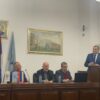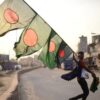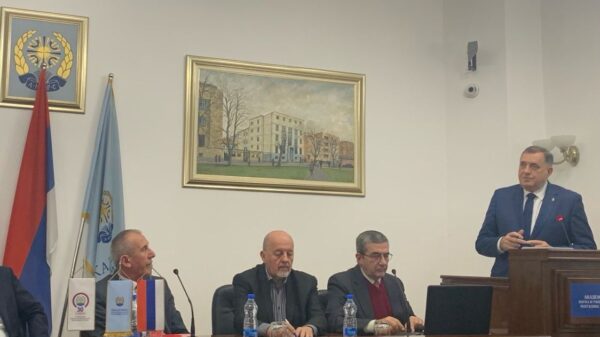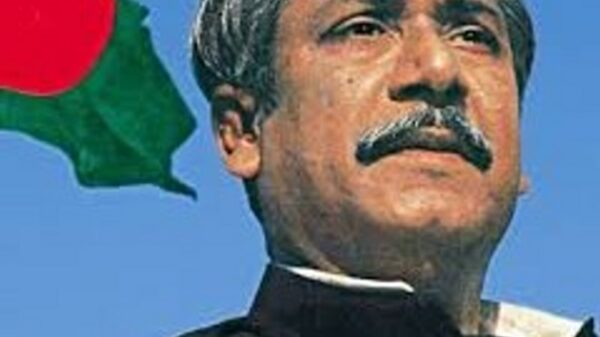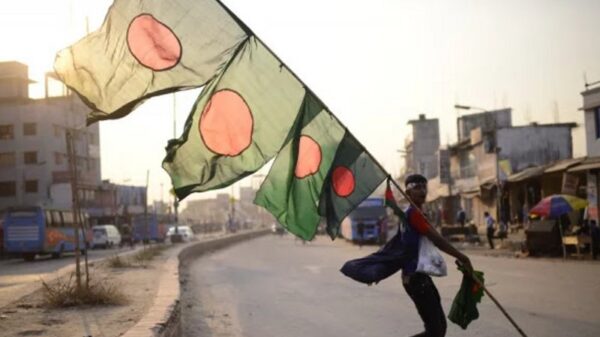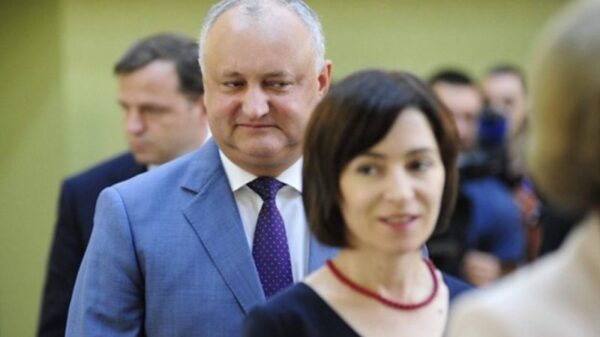This September, we commemorated the anniversary of a tragic event – the untimely passing of Mahsa Amini, a young woman whose life was brutally taken by the Iranian regime. Her heart-wrenching death ignited a wave of protests that swept across Iran, highlighting the deep-seated issues of gender inequality and the oppressive policies of the autocratic government – writes Turkan Bozkurt.
Mahsa’s life was cut short while she was in police custody, a stark reminder of the injustices faced by women, particularly in cases related to the hijab. Her story transcended borders, resonating with people worldwide and triggering a resounding global call for justice and a renewed commitment to the fundamental principles of human rights.
Indeed, the protests and activism in Iran may not have resulted in a complete overthrow of the government, but they have undeniably illuminated a profound yearning for change within the country. These demonstrations have exposed a significant divergence between the aspirations and cultural values of the Iranian people and the policies and politics of the government. The desire for change and the call for greater social and political freedoms are potent indicators of the evolving landscape within Iran. The global solidarity for women’s rights finds a remarkable embodiment in the recent achievement of Narges Mohammadi, an Azerbaijani-Iranian activist, honored with the Nobel Peace Prize for her significant contributions in the realm of human rights.
The intricate legal framework in Iran fosters an oppressive system in which women are not only expected to defer to men but are often denied full recognition as capable individuals. As covered extensively, there are compulsory hijab laws for women prohibiting them from bodily autonomy. Women receive half the share of inheritance that men receive. In cases of divorce, Iranian law generally grants custody of children to fathers, even if it is not in the best interest of the child which also forces women to remain in abusive relationships. Women need written permission from their male guardians (father or husband) to travel. These norms and practices collectively relegate women to a position of inferiority, perpetuating the notion that they are incapable of making rational decisions regarding their own bodies, lives, and futures.
In addition to the existing oppressive measures, we have sadly witnessed the punishment of female students in schools as well. Human rights defenders have documented students being poisoned in schools nationwide in the aftermath of the protests. While the motivations behind these attacks remain shrouded in uncertainty, some speculate that they might be a deliberate tactic employed by the government to propagate social pressure and fear. Irrespective of the identities of the perpetrators, these acts of collective punishment have instilled a pervasive climate of fear within Iranian society, particularly among young girls. These events underscore a grave lapse in government responsibility, even if they were not intentionally orchestrated as punitive measures. Indeed, it is deeply concerning that girls are not safe even within their educational institutions. It is essential that all students can access education in a secure and nurturing environment that promotes their physical and emotional well-being.
While it is undeniable that these laws impose chains of subjugation upon all women, it is crucial to recognize that their impact varies significantly based on the intersectionality of their identities. To truly grasp the extent of an individual’s oppression, we must consider the multifaceted nature of their identity and analyze the struggle through an intersectional feminist perspective as outlined by Kimberly Crenshaw. Factors such as gender, class, ethnicity, religion, sexuality, age, and other identifiers all play integral roles in shaping the quality of one’s life and experiences.
For instance, during the protests, the issue of mandatory hijab received substantial attention. While this is a significant concern affecting all women in Iran, it takes on a particular urgency for women of higher social classes. This illustrates how different aspects of identity intersect and prioritize certain issues for specific groups within the broader struggle for women’s rights.
When examined through this metric, it becomes evident that while the issue of mandatory hijab unquestionably impacts every woman in Iran, there exists a spectrum of equally crucial, if not more pressing, concerns that have often been overlooked or underreported. These issues span a wide array of critical subjects, including honor killings, child brides, access to education and even environmental issues like access to water and food that exacerbate existing inequalities.
To illustrate this point, Farzaneh Mehdizadeh, the Director General of the Clinical Examination Office of the Forensic Medicine Organization, announced that in 2022, 75,000 women and children have referred to forensic medicine because of physical injuries caused by domestic violence. This harrowing figure serves as a reminder that the discourse surrounding discrimination against women in Iran must extend far beyond the singular focus on the issue of hijab.
As Iran boasts a rich tapestry of ethnic diversity, it’s imperative that we integrate the ethnic identities of women into our analytical framework. The country’s laws and rhetoric have often encompassed politics of identity, necessitating a holistic examination. Throughout the protests, our initiative group at Etekyazi was able to collect enough data and publish quarterly quantitative reports on both the arrested and killed protestors where a significant portion of them were women and many underage children. In fact, 14% of overall deaths were children like the 16-year-old Sarina Esmailzadeh, 15-year-old Asra Panahi who was killed in her school and the 13-year-old Neda Bayat whose arrest was marked by unspeakable brutality, culminating in her untimely demise due to the severe injuries inflicted upon her during her time in custody.
Within Iran, Azerbaijani women whose first language is not Farsi (Persian), often face unique challenges within the Iranian legal system as well due to linguistic and cultural differences. These challenges encompass a spectrum of issues, from the practical complexities of speaking in Farsi and effectively communicating with authorities and officials to the profound difficulty of accessing legal services and comprehending legal documentation. The official use of Persian in Iran’s legal system amplifies these difficulties, particularly for Azerbaijani women originating from smaller cities or rural areas where Farsi proficiency is limited. This underscores a critical intersection between education accessibility and a woman’s capacity to safeguard her rights and interests during legal proceedings.
Outside of Iran, focus on the underrepresentation of Azerbaijani women in Western media is a crucial point to highlight. It is essential to recognize and challenge the stereotypes and biases that can lead to the omission of certain ethnic groups within broader discussions of women’s rights and discrimination in Iran. The stigmatization of Azerbaijani women as passive bystanders or the erasure of their ethnic identities not only by the Iranian government but also by elements within Iranian centralist opposition is a concerning issue that deserves attention. To demonstrate this omission, while it became blatantly clear that Mahsa Amini was Kurdish and Faezeh Barahui was Baluch, another famous name Hadis Najafi who was Azerbaijani, was not referred to by her ethnicity. Or Elnaz Rekabi who is an international climber and took her hijab off in South Korea as a form of protest and support for her sisters, her ethnic background was omitted in reports and media articles.
It is important to bring forward the stories and experiences of women from all ethnic backgrounds in Iran to provide a more comprehensive understanding of the challenges they face and to counteract stereotypes and biases that can hinder progress toward gender equality and human rights. This includes the recognition of the diverse ways in which women in Iran, including Azerbaijani women, engage in activism and advocacy for their rights and the well-being of their communities.
Here comes to mind the example of mobilization of Azerbaijani women to raise awareness about the preventable ecological disaster of Lake Urmia underscores the importance of acknowledging the unique challenges faced by different groups within Iranian society. Their efforts to draw attention to such critical issues should not go unnoticed, and media outlets should strive to provide equitable coverage to ensure that their voices are heard. The lack of coverage on the arrest of influential Azerbaijani women writers like Ruqeyye Kabiri and Nigar Xiyavi following their activism serves as a reminder of the challenges faced by Azerbaijani women who are discriminated not only based on their gender but also ethnic background. It further emphasizes the necessity of intersectional approaches that consider not only gender but also ethnicity, class, and other factors when addressing inequality and advocating for human rights. Incorporating a diverse range of voices and experiences into media coverage and advocacy efforts is instrumental in fostering a more inclusive and accurate representation of the struggles and achievements of women in Iran and beyond.
About the author:
Turkan Bozkurt is a paralegal, researcher and human rights activist who focuses on minority rights from an intersectional feminist perspective. She conducts comparative research on colonial oppression and exploitation of BIPOC in North America with minority issues in Iran. She’s also a student of legal philosophy.


































